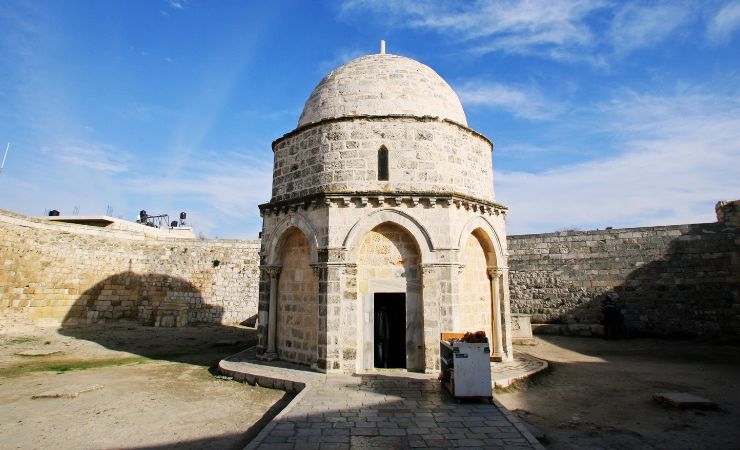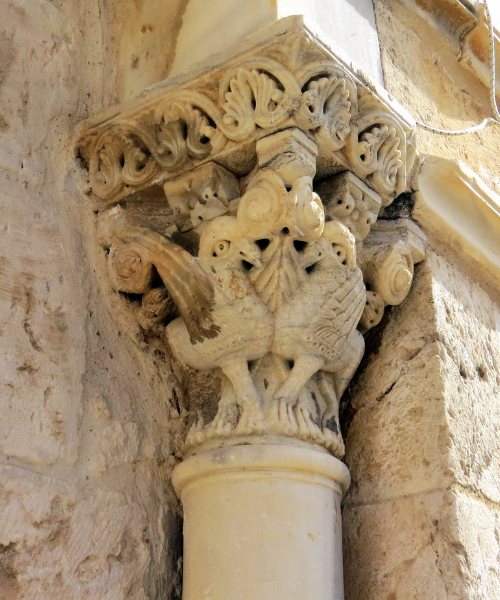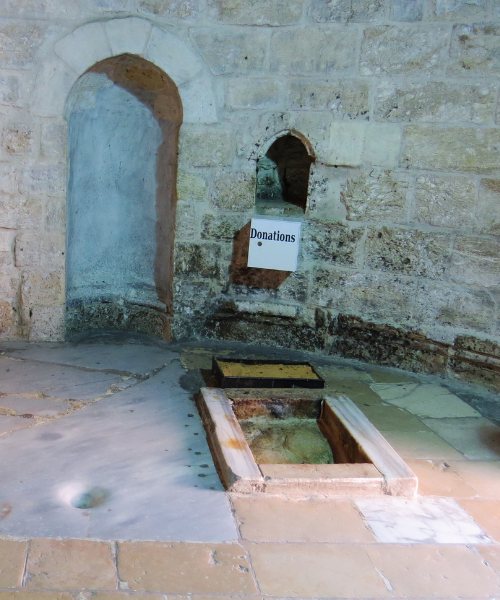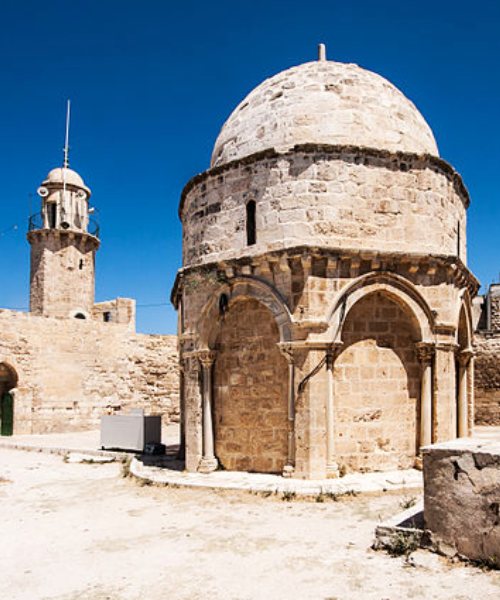Chapel of the Ascension: Tracing the Sacred Path to Heavenly Heights
Introduction
A revered pilgrimage site for Christians worldwide, the Chapel of the Ascension stands as a testament to the ascension of Jesus Christ into heaven. This ancient chapel (turned into a mosque) holds profound spiritual significance and will captivate you.

Location of the Chapel of the Ascension
Situated on the Mount of Olives, just east of the Old City of Jerusalem, Chapel of the Ascension commands a breathtaking panoramic view of the city below. This vantage point allows for a deep connection with the historical and religious fabric of the region.
Biblical Context
The biblical significance of Chapel of the Ascension Jerusalem stems from its association with the ascension of Jesus Christ. According to the New Testament, after His resurrection, Jesus appeared to his disciples on various occasions. One of these significant encounters occurred on the Mount of Olives, where Jesus ascended to heaven, promising to return.
Transformation from Church to Mosque to Chapel: A Historical Evolution
Throughout its long and storied history, Chapel of the Ascension has undergone various transformations, reflecting the shifting tides of power and religious practices in the region. One notable chapter in the chapel’s story is its conversion into a mosque, an event that highlights the complex interplay between different faiths and civilizations over the centuries.
During the 7th century, Jerusalem came under Islamic rule as the Islamic Caliphate expanded its territories. The conquerors sought to exert their influence over the city’s sacred sites. In an effort to assert their religious identity and accommodate the needs of the growing Muslim population, the church was transformed into a mosque, known as the “Dome of the Ascension.”
This transformation involved architectural modifications to align the building with Islamic traditions. The interior of the church was redesigned, incorporating elements such as mihrabs (prayer niches), qibla walls (indicating the direction of Mecca), and minbars (pulpits) to accommodate Islamic worship practices. The church’s dome was enhanced and adorned with Islamic calligraphy and geometric patterns, adding a distinct Islamic character to the structure.
The conversion of church into a mosque demonstrates the interweaving of cultures and the ability of sacred spaces to adapt to the prevailing religious beliefs of the time. It serves as a testament to the historical evolution of Jerusalem as a melting pot of civilizations, where different faiths have left their mark on the city’s architectural landscape.
In more recent history, following the end of the Ottoman Empire and the British Mandate in Palestine, the control of Jerusalem shifted. The establishment of the State of Israel in 1948 brought about a new era for Chapel of the Ascension. Today, the chapel has been restored to reflect both the Christian and Muslim identities and is once again a place of worship for visitors from around the world.



Architecture: Tracing the Crusader and Islamic Influences
The architecture of Chapel of the Ascension is a testament to the rich tapestry of historical influences that have shaped its design and structure over the centuries. With elements dating back to the time of the Crusaders and the Islamic period, the church showcases a fascinating blend of architectural styles and cultural heritage.
At the core of the church’s architecture lies the original Crusader structure, which was built during the 12th century. Original decorations such as the columns and the griphon that lie on top of them are a testament to the skills of the artist who made them. The structure included the rounded arches, and a simple yet sturdy construction. The original adicule had no roof.
The church underwent significant transformations under Islamic rule. During the Islamic period, the church was converted into a mosque. Walls were built between the arches, the roof resurrected, and in the church’s interior, a mihrab (prayer niches) was added. These additions showcase the integration of Islamic aesthetics into the existing Crusader architecture, creating a unique fusion of styles.
Furthermore, the dome of the church, which is a prominent feature, displays Islamic motifs and calligraphy. Intricate geometric patterns adorn the dome, adding a distinct Islamic character to the overall design. These artistic embellishments reflect the skill and craftsmanship of Islamic artisans who sought to create an atmosphere of reverence and spiritual beauty within the mosque.
The architectural journey of Chapel of the Ascension is a remarkable testament to the coexistence and interplay of different cultures and faiths throughout history. It represents the transformative power of time and the capacity of sacred spaces to evolve, embracing the architectural sensibilities and religious practices of various civilizations.
When you visit the Chapel of the Ascension today, you will have the privilege of witnessing this architectural fusion, where the Crusader and Islamic influences intertwine to create a visually captivating and historically significant place of worship. The architectural diversity serves as a reminder of the complex and interconnected nature of human civilization, where cultural exchange and adaptation have left an indelible mark on this cherished pilgrimage site.
Sources and Additional Reading
Madain Project
Wikipedia – Chapel of the Ascension, Jerusalem
Nearby Sites
- Pater Noster (Eleona) Church: A significant pilgrimage site believed to be the place where Jesus ascended to heaven and where he taught his disciples the Lord’s Prayer.
- The Garden of Gethsemane: Located at the foot of the Mount of Olives, this serene garden holds immense spiritual significance as the place where Jesus prayed before his arrest. The Grotto of Gethsemane is part of the Gardens.
- Dominus Flevit Church: The exquisite teardrop-shaped church commemorates the moment when Jesus wept over the impending destruction of Jerusalem.
- Mount Zion: This historic hilltop is home to several important religious sites, including the Last Supper Room and the Tomb of King David, providing a deeper understanding of the roots of Christianity and Judaism.



